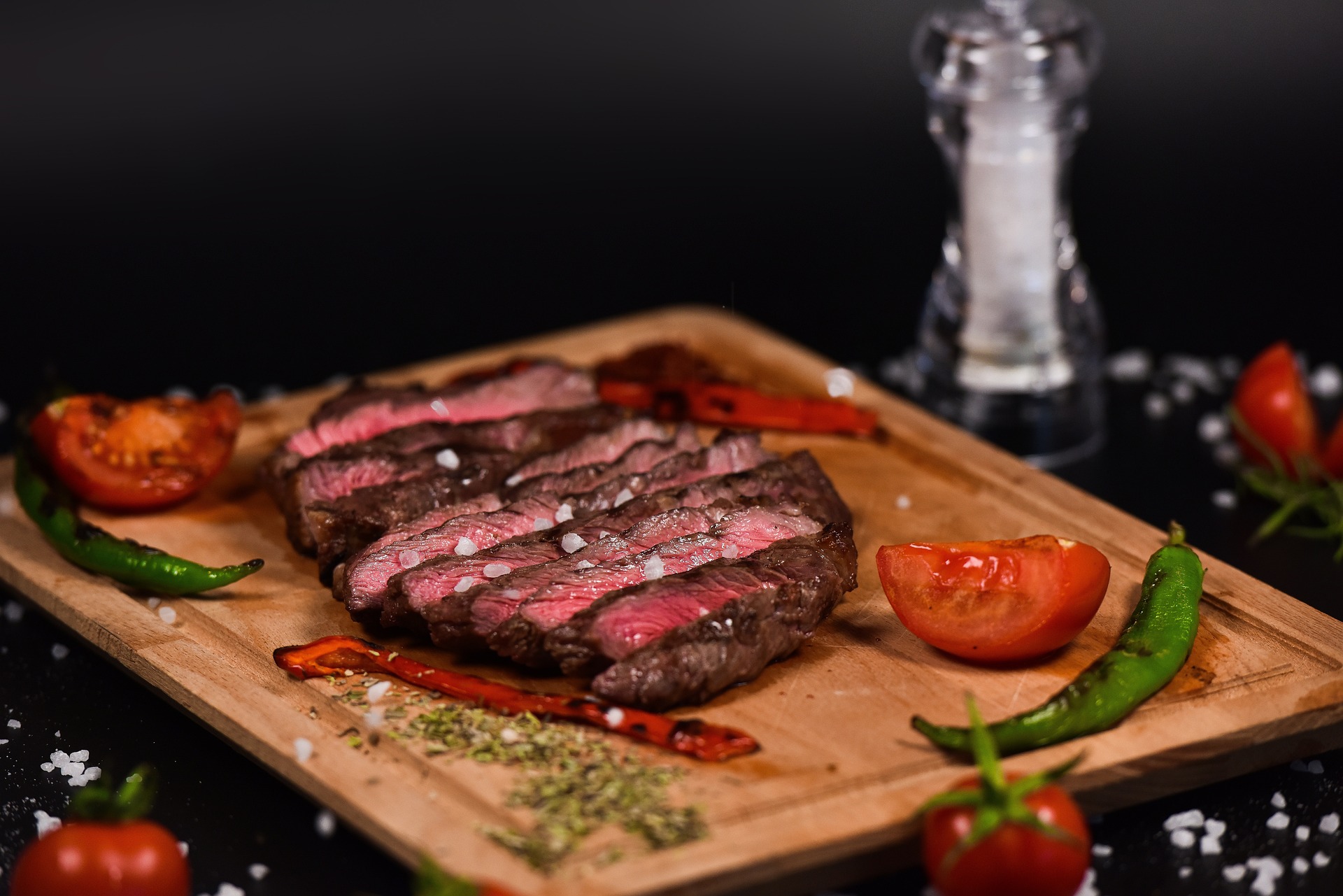I love steak. In fact, I would eat it every day if I could. But I despise shopping for it. If you hate shopping for meat as much as I do, you might’ve considered a meat delivery box such as ButcherBox or Good Chop. Meat delivery boxes are a great way to avoid running around to 3 different grocery stores to find the exact cut or quality of meat you want.
Nowadays, there are plenty of places to order meat online, making identifying the best delivery service challenging. ButcherBox is well-known in the world of grass-fed, grass-finished beef, yet many know Good Chop for its 100% customizable boxes. But where should you start? Below, I compare ButcherBox vs Good Chop to help you determine which box is better for you.
Selection of meats

Comparing ButcherBox vs Good Chop in terms of selection is a challenging task, as both brands have an excellent selection of beef, poultry, seafood, and more. Regardless of which size of Good Chop box you order, you can hand-select your cuts for every box. This means I don’t have to get tired of eating the same thing every week or end up with meats that are not my favorite. While there’s the most selection regarding cuts of steak, Good Chop offers a great variety of other categories, including organic ground chicken, bratwurst sausage, and fresh sea scallops. The selection of sides, such as mac & cheese or potatoes au gratin, makes it easy to make an entire meal out of the contents of your box.
ButcherBox’s selection leans more heavily on red meat, with over 20 cuts of 100% grass-fed, grass-finished beef. They certainly offer a more premium selection of specialty meats like brisket and bavette steaks. The selection of ButcherBox is better for the true carnivore who wants the best selection of fresh red meats, with the occasional pre-made options such as ButcherBox’s grass-fed meatballs. Additionally, ButcherBox offers premium varieties of seafood that Good Chop does not, such as fresh lobster.
Sourcing of meats

Both ButcherBox and Good Chop are transparent about sourcing their meats, which I appreciate. ButcherBox offers only meat from pasture-raised cows that are either 100% grass-fed or grass-fed and grain-finished. All beef is of exceptional quality, and cows are never confined to feed lots or given antibiotics or hormones. ButcherBox's 100% grass-fed beef is sourced from cattle born, raised, and harvested in Australia; however, the brand’s pasture-raised, grain-finished beef is a product of the USA. All seafood from ButcherBox is harvested sustainably and responsibly farmed, too, with wild-caught options sourced from the USA or Canada and responsibly farmed options sourced from Norway.
Good Chop’s meat and seafood are exclusively from independent family farms and fisheries, focusing on supporting local economies and offering premium quality products. This is an attractive advantage for those who want to support American farmers and support compassionate animal welfare practices. The downside, however, is that most of Good Chop’s beef products are only grain-fed and not grass-fed. Grass-fed beef generally has a darker color when compared to grain-fed beef. As you make your selections, take notice of which cuts are grass-fed or grain-fed.
Price and value

Given the differences in availability of grass-fed, grass-finished options, it’s tough to compare the price and value of ButcherBox vs Good Chop. Of course, 100% grass-fed beef will cost more than conventionally raised, grain-fed beef — no matter where you buy it. Both sites run lots of promotions throughout the year, which include free add-ons to your box at no additional cost.
Overall, Good Chop is cheaper at face value, with a medium box (up to 14 lbs of meat) priced at $99. The classic-size Butcher Box (custom-curated) includes 8 to 11 pounds of meat and is priced at $146 per box. Again, this isn’t an apples-to-apples comparison, though, as ButcherBox offers a better selection of higher-quality meats. Good Chop could be a better choice if keeping costs more affordable is of interest. However, ButcherBox is a better choice for the health-conscious meat eater.
ButcherBox vs Good Chop: Final thoughts

Overall, I thoroughly enjoy ButcherBox and Good Chop and have made excellent meals using meat from both boxes. Selecting the best meat subscription box for you depends on your preferences. I recommend considering what is most important to you when shopping for meat.
For the best selection of grass-fed, grass-finished meats, ButcherBox shines as a clear winner. In addition to meat quality and selection, I prefer ButcherBox’s reliable delivery system over the shipping via Good Chop. On the other hand, Good Chop may be a better option for cost-effective meals and planning for meals for families or groups. Additionally, Good Chop’s “USA-only” approach may appeal more to some buyers who want to support American farmers.
Another thing to note is that Good Chop is more than just a “meat box”; it offers other things to complete your meal, such as desserts like pecan pies and specialty butter like Roasted Garlic Herb Butter. I also like the customizable nature of Good Chop on all plans, whereas you must sign up for the most expensive ButcherBox to choose your specific cuts of meat.
All in all, it’s a close tie between ButcherBox vs Good Chop for me. Both boxes offer high-quality meat and convenience, two things I value. Both boxes are worth it, each with its advantages.




